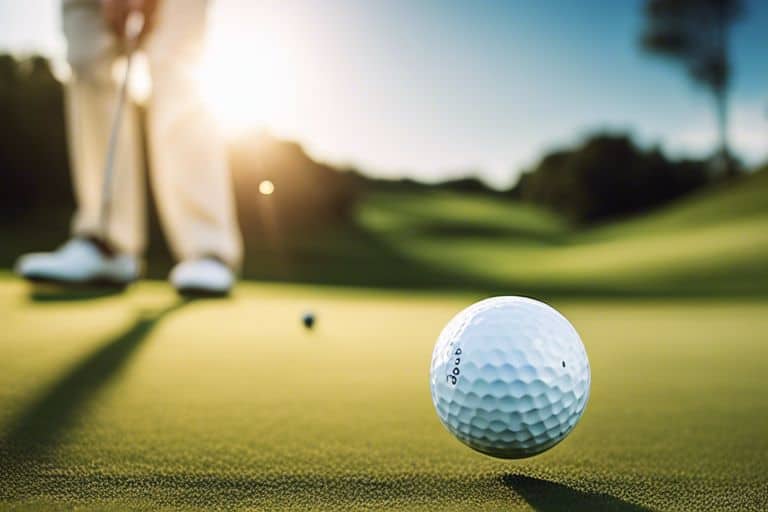What are the rules for playing a provisional ball in golf?
Envision a scenario where your ball has gone missing or is potentially out of bounds – this is when knowing the rules for playing a provisional ball in golf becomes crucial. In this blog post, I will walk you through the specific situations that allow for the use of a provisional ball, the correct procedure for playing one, and the penalties for not following the rules. Understanding these rules can save you valuable time and strokes on the course and can prevent potential frustration and misunderstandings during your game.
Understanding the Basics
Your knowledge of golf rules is fundamental to your success on the course. Understanding the basics will ensure that you are able to maneuver any unexpected situations that may arise during your round. One crucial aspect of golf rules pertains to the provisional ball, which can come in handy if you find yourself in a situation where your original ball may be lost or out of bounds.
Definition of a Provisional Ball in Golf
A provisional ball is a second ball played when the original ball is believed to be lost or out of bounds. The purpose of playing a provisional ball is to save time and keep the pace of play moving without the need to return to the spot of the previous shot. It is meant to be a safeguard against losing time and potentially disrupting the flow of the game.
The Role of Provisional Balls in Speeding Up Play
One of the key benefits of using a provisional ball in golf is that it helps in speeding up the pace of play. Instead of wasting time searching for a potentially lost ball, players can quickly play a provisional ball and continue with their round. This not only benefits the individual player, but it also helps in maintaining the overall pace of play on the course, ensuring an enjoyable experience for all golfers.

The Rules of Play
Now, let’s dive into the rules regarding playing a provisional ball in golf. Understanding when and how to play a provisional ball, as well as the restrictions and penalties associated with it, is crucial for any golfer. Follow along as I break down the key guidelines.
When to Play a Provisional Ball
When you suspect that your original ball may be lost outside of a water hazard or out of bounds, you have the option to play a provisional ball. This is especially crucial if there is a chance your original ball may not be found, as going back to the original spot to re-tee can be time-consuming and impact the pace of play. You should announce your intention to play a provisional ball to your playing partners to ensure everyone is aware of the situation. It’s always better to be safe than sorry and it’s in your best interest to play a provisional ball when in doubt.
How to Announce a Provisional Ball Correctly
Announcing your intention to play a provisional ball is a crucial step in the process. To do this, I ensure that I clearly announce “I am playing a provisional ball” to my playing partners. This provides clarity and understanding among all players, and it’s important to do so before playing the provisional ball. By making a clear announcement, you avoid any confusion or disputes later on and can proceed with confidence.
Restrictions and Penalties
It’s important to note that there are restrictions and penalties associated with playing a provisional ball. One of the key restrictions is that you cannot play a provisional ball if your original ball is in a water hazard or if you have already played another provisional ball. Additionally, if your original ball is found within the five-minute search time, you must abandon the provisional ball. Failure to adhere to these rules can result in penalties, so it’s crucial to be aware of the restrictions and play within the guidelines to avoid any penalties.

Practical Scenarios and Examples
Lastly, let’s delve into some practical scenarios and examples of when and how to play a provisional ball in golf. Understanding these situations will help you apply the rules correctly and improve your overall game.
Common Situations Requiring a Provisional Ball
One common scenario where you would need to play a provisional ball is when your original ball may be lost outside a water hazard or out of bounds. By playing a provisional ball, you can save time by allowing yourself the chance to continue the play without having to backtrack to the original spot. Another situation is when there is a possibility that your original ball may be unplayable. Playing a provisional ball in this case gives you the opportunity to continue the game with minimal interruption.
Case Studies: Applying the Rules Correctly
For example, I once hit my ball into thick rough and wasn’t sure if I would be able to find it. I immediately played a provisional ball, which turned out to be a wise decision as I couldn’t locate the original one. Another situation arose when my shot went towards a water hazard. I followed the correct procedure of playing a provisional ball and it helped me avoid unnecessary penalties. It’s important to remember that when playing a provisional ball, you need to make clear to your playing partners that the ball you are playing is a provisional. These case studies demonstrate the dos and don’ts of playing a provisional ball in golf.
- Case Study 1: In a tournament, I hit my tee shot towards a heavily wooded area, so I immediately declared and played a provisional ball. Fortunately, I found my original ball, but the provisional served as insurance, giving me peace of mind and allowing me to continue without any penalty.
- Case Study 2: During a casual round, I hit my ball towards a water hazard, so I followed the correct procedure of playing a provisional ball. Unfortunately, my original ball was not found, but the provisional allowed me to continue without penalty.

Strategies and Etiquette
After understanding the basic rules for playing a provisional ball in golf, it’s important to consider the strategies and etiquette that come into play when using a provisional ball. Whether you are playing competitively or for leisure, following the correct strategies and maintaining proper golf etiquette is crucial for a smooth and enjoyable round.
Strategic Considerations for Provisional Balls
When it comes to playing a provisional ball in golf, strategic considerations are crucial. The main reason for hitting a provisional ball is to save time in case your original ball cannot be found or is deemed unplayable. Therefore, it is important to assess the situation and make a quick decision on whether to play a provisional ball or continue searching for the original ball. Depending on the circumstances, hitting a provisional ball can save you valuable time and potentially strokes on your scorecard.
Golf Etiquette Related to Provisional Ball Play
Proper golf etiquette is an essential aspect of the game, and this also applies to the use of provisional balls. When playing a provisional ball, it is important to clearly announce your intentions to other players in your group. This not only keeps the game moving smoothly but also ensures that everyone is aware of your actions on the course. Additionally, it is important to remember that if you do find your original ball after hitting a provisional, you must abandon the provisional ball and continue play with the original. This may seem like a minor detail, but it is a crucial aspect of golf etiquette that demonstrates respect for the rules of the game and your fellow golfers.
Conclusion
From above, it is clear that playing a provisional ball in golf is governed by strict rules set out by the USGA and R&A. By understanding when and how to play a provisional ball, golfers can avoid penalties and keep their game moving smoothly. Remember, when in doubt, it is always best to play a provisional ball to ensure that you avoid any possible penalties for lost or out of bounds shots. Following these rules will help to ensure fair play and maintain the integrity of the game.






